Ancient Egyptian festivals, known as “Heb,” were vital to religious and communal life, closely tied to the agricultural calendar and honoring various gods. These events featured rituals, myth reenactments, and grand processions to uphold cosmic balance. Key festivals like Opet and Wepet-Renpet marked seasonal transitions and royal renewal, while others such as the Bastet Festival and the Feast of Drunkenness celebrated joy, fertility, and divine connection. Each festival helped reinforce spiritual beliefs and structured Egypt’s social and agricultural rhythm.
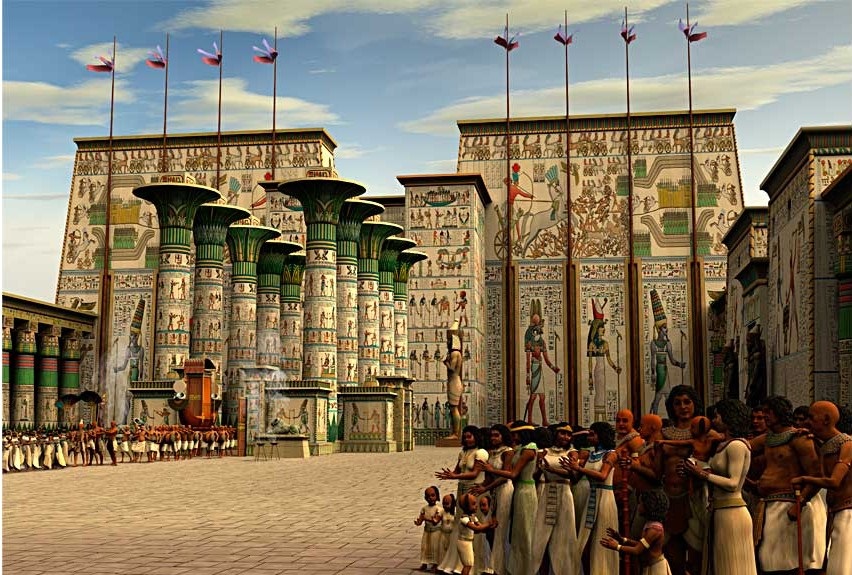
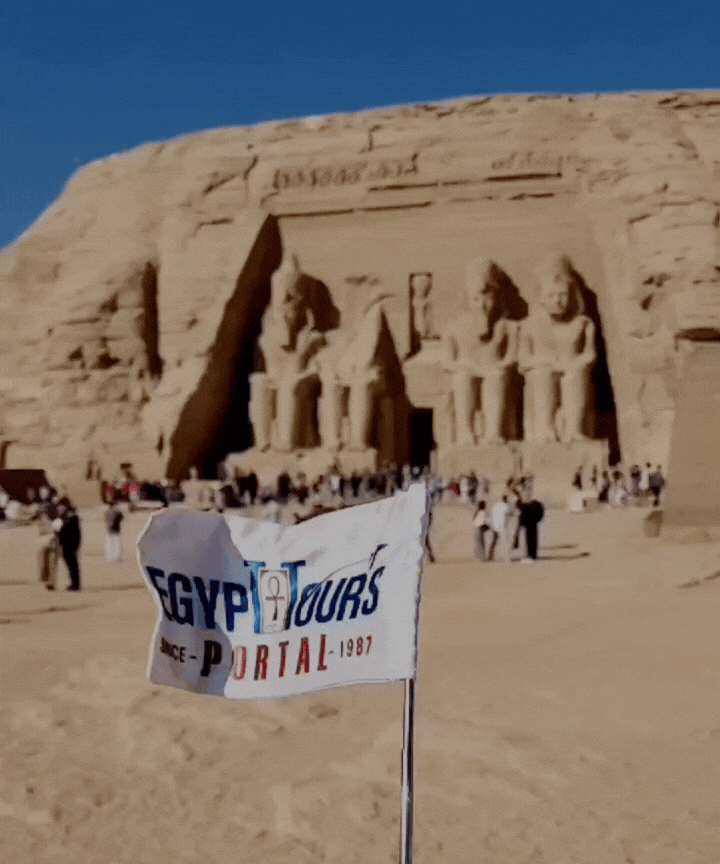
Festivals in Ancient Egypt were used to be known as "Heb" throughout the year to give thanks to the gods and seek divine favors. In the festivals in ancient Egypt, the Egyptian would offer sacrifices, offerings and celebrate the might of the ancient Egyptian gods and pharaohs, but the true purpose of these festivals was to behold the gods with their own eyes and maintain the belief structure that the world is operated through the will of the gods as interpreted by the priests and implemented by the Pharaoh. Festivals in Ancient Egypt simply served as manifestations of the divine in human existence and, as such, created a pattern of life for the ancient Egyptian people.
The Egyptian organized their time to fit their festivals as the Egyptian calendar was divided into 12 months of exactly 30 days and the entire year was split into three seasons, the first season was Akhet the season of flooding, the second was Peret the season of growth and the third was Shemu the season of harvesting plus they added five extra days to celebrate a different deity of each day with their special festival. The ancient Egyptian festivals would involve a procession of a god by boat or land across a specific route, such as the route found at the Karnak temple.
At the beginning of each year, they would hold a festival, and also at the end to emphasize the philosophy of the eternal, cyclical nature of life. Egypt contained countless festivals throughout the year, such as :
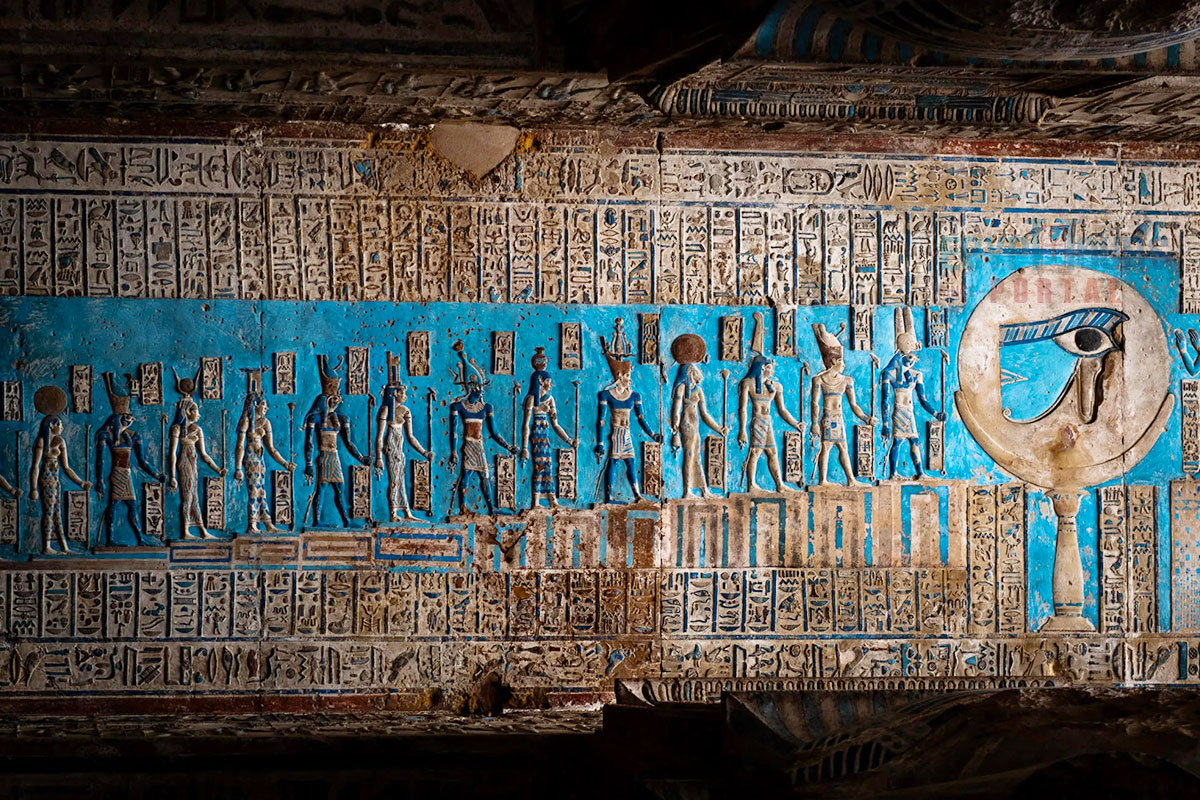
This festival celebrated the superadded days at the end of the year. Those five days brought the ancient Egyptian calendar to 365 days, and on each day, a specific god is celebrated. According to the myth of creation, The goddess of the sky Nut daughter of Ra got pregnant by her brother Geb the earth god which angered him and declared she will not give birth on any day of the year, which made the God of Knowledge play a game of Senet with Khonsu and win five day's worth of moonlight which nut gave birth in.
The first day was the birth of Osiris, the Lord of the Duat (the Egyptian underworld), The second day was the birth of Horus, a very prominent falcon-headed deity associated with kingship and the sky, The third day celebrated Seth, a god associated with chaos, war and the deserts of Egypt, The fourth and fifth days celebrated the goddesses Isis and Nephthys, two sisters who were associated with protective funerary rites and who brought the god Osiris back from the dead.

Opet festival took place in Akhet during the second month, it is the most important festival in Egyptian history and the longest celebration in the Theban festival calendar, as it stretched across 11 to 15 or even 20 days. In the festival, the king was rejuvenated by the god Amun at Thebes. The festival would start with the Theban Triad (Amun, Mut, and Khonsu) traveling from the Karnak temple to the temple of Luxor. In the Luxor temple, Amun-Re of Karnak would unite with Amun of Luxor and ensure the re-creation of the cosmos each year. The pharaoh was also part of this union and participated in the regeneration of this divine power.
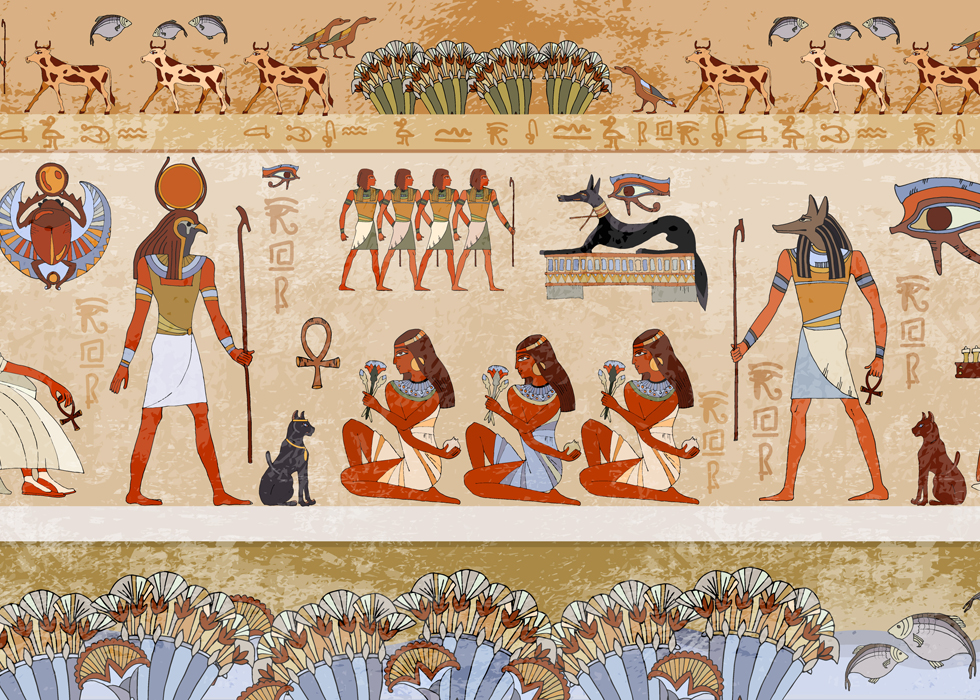
This festival celebrates the beginning of the new year when the star Sothis (Sirius) disappears from the sky, then appears at the eastern horizon at sunrise. It also celebrated the death and rebirth of Osiris and the rejuvenation and rebirth of the land and the people. The festival depended on the inundation of the Nile River.
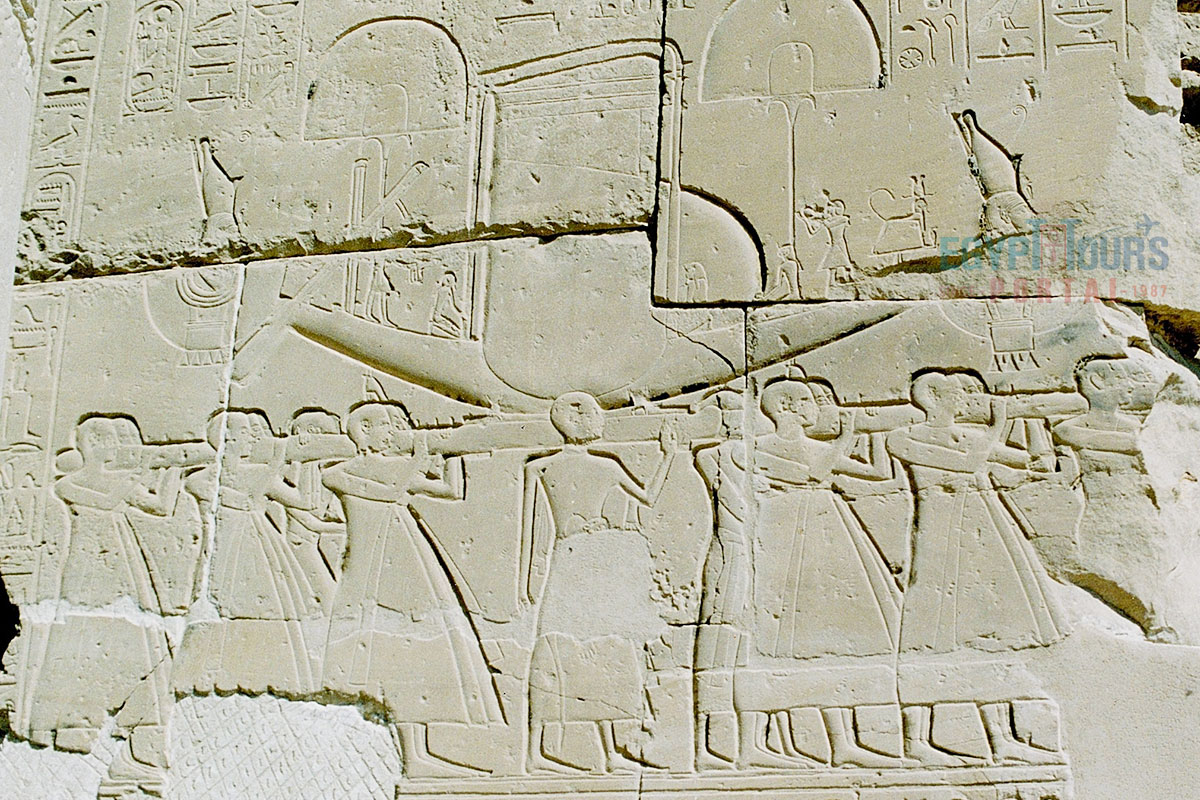
The beautiful feast of the valley honors the souls of the deceased, A.K.A festival of the dead, which took place between the harvest Shemu and the Nile flooding Akhet. It celebrated the strong bond between the living and the dead and was a way to bring the past into the present, and with the help of the eternal godson, into the future.
The festival is famous for being the most popular in the history of Egypt as the procession begins with the statues of Amun, Mut, and Khonsu (the Theban Triad) being taken from their temples to visit the mortuary temples and necropolis across the river, plus images of the deceased being carried so their souls could join them and the living would bring flowers, food, drink offerings similar to the day of the dead in Mexico.
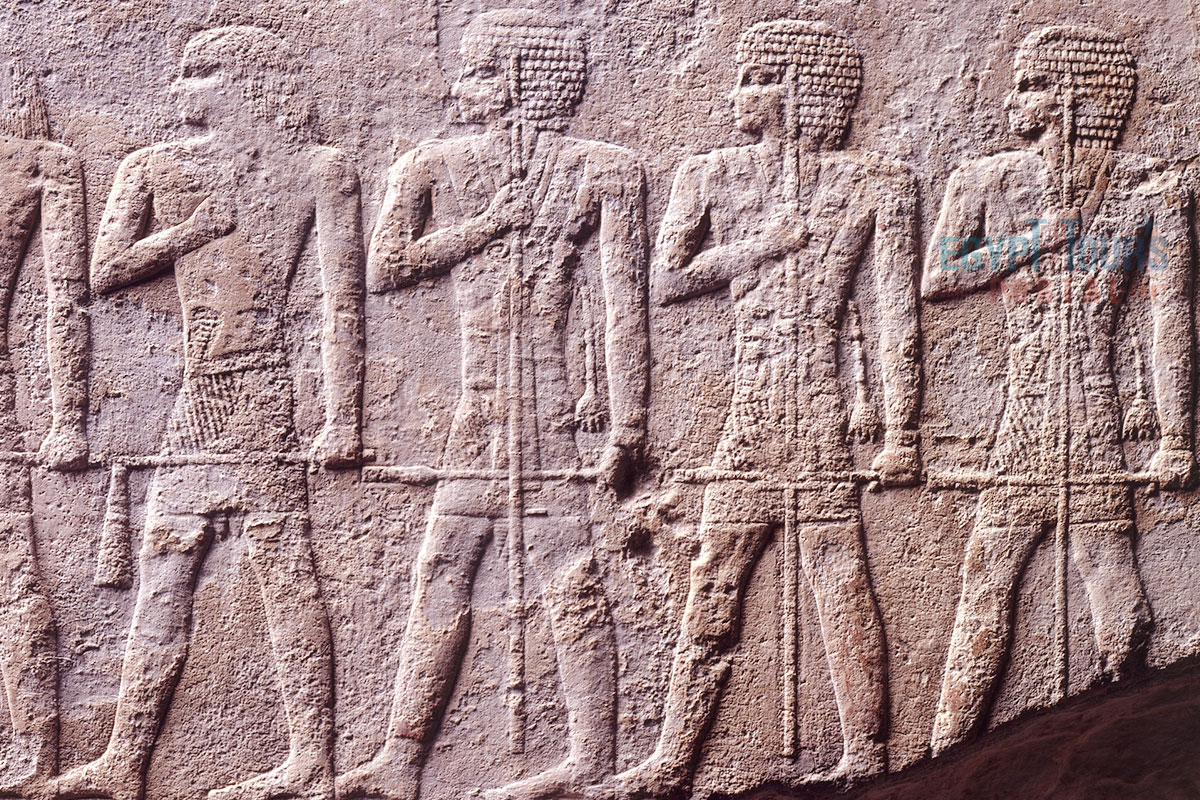
This festival is a highly specialized one as it is celebrated by the king every thirty years of the king's reign in order to ensure he is in complete harmony with the will of the gods. The king is also required to run around an enclosed space to prove he was fit and would shoot fire arrows towards the four cardinal directions as a symbol of his power over the land and his ability to conquer other nations and increase Egypt's influence, wealth, and might.
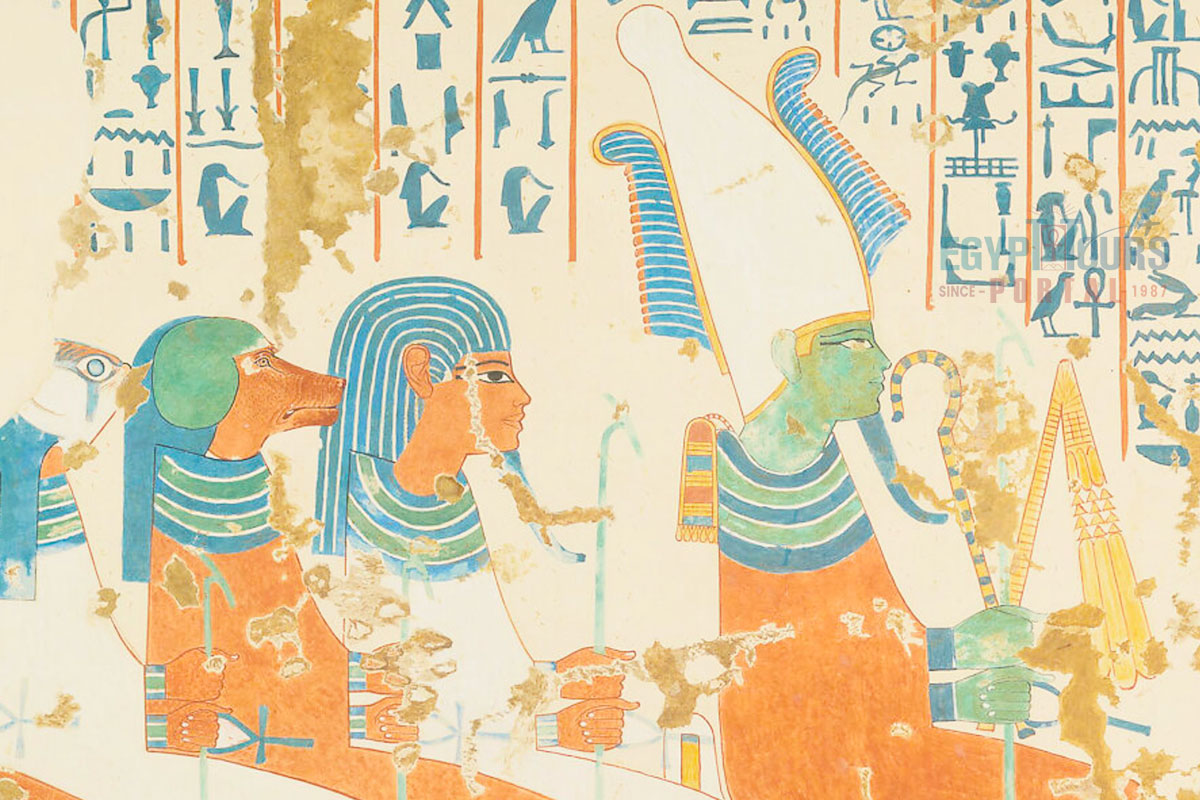
Wag Festival was an ancient celebration commemorating Osiris’s death and honoring the spirits of the departed as they journeyed into the afterlife. It came after the Wepet-Renpet festival but had its date adjusted to follow the lunar calendar. One of Egypt's oldest celebrations, it first appeared during the Old Kingdom. At the Wag Festival, participants crafted small paper boats and placed them on graves, symbolizing Osiris's death, while others set paper shrines adrift on the Nile, continuing this poignant tribute.
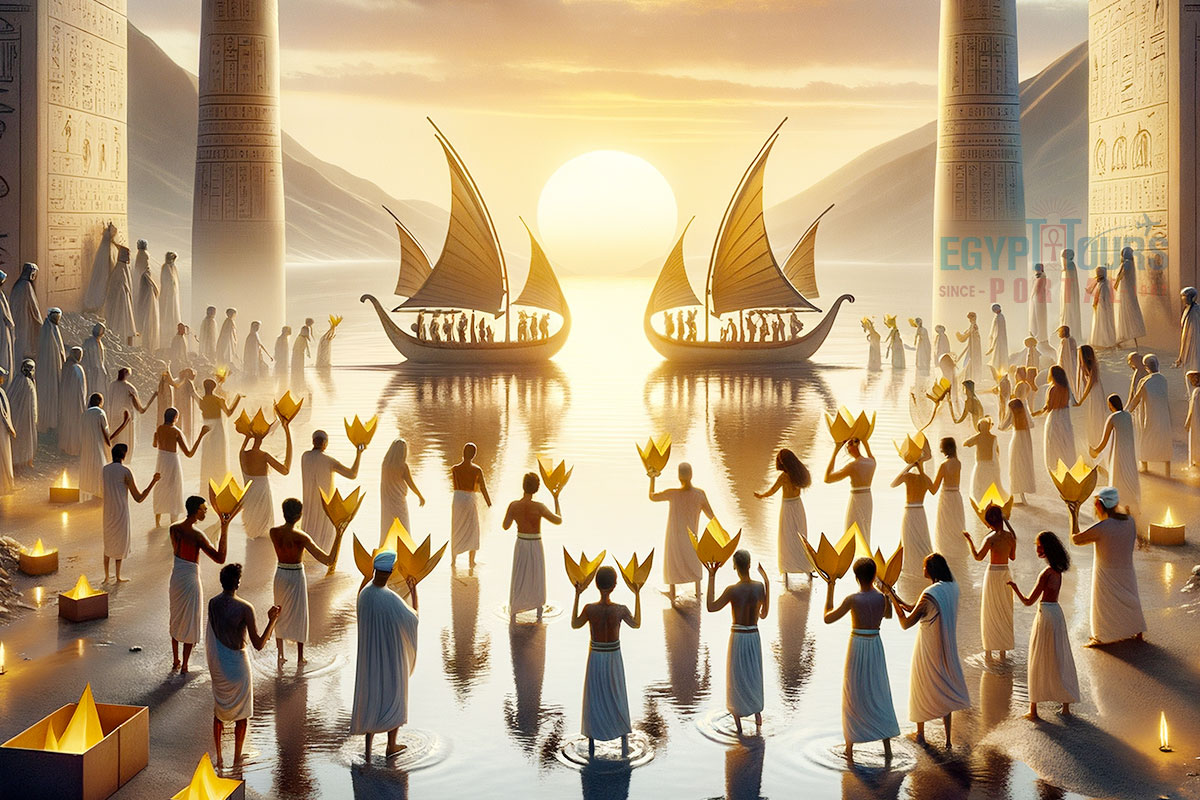
Wag and Thoth Festival is able to merge the birth of the god of knowledge, Thoth, and the Wag Festival. This celebration focuses on themes of rejuvenation and resurrection. Scheduled on the 18th day of the year’s first month, Thoth was revered as the deity of wisdom, writing, and knowledge, closely associated with Osiris's judgment of the deceased. From the latter section of the Old Kingdom onward, the festival combined the rebirth of Osiris with the birth of Thoth, creating a significant occasion for all the true devotees.
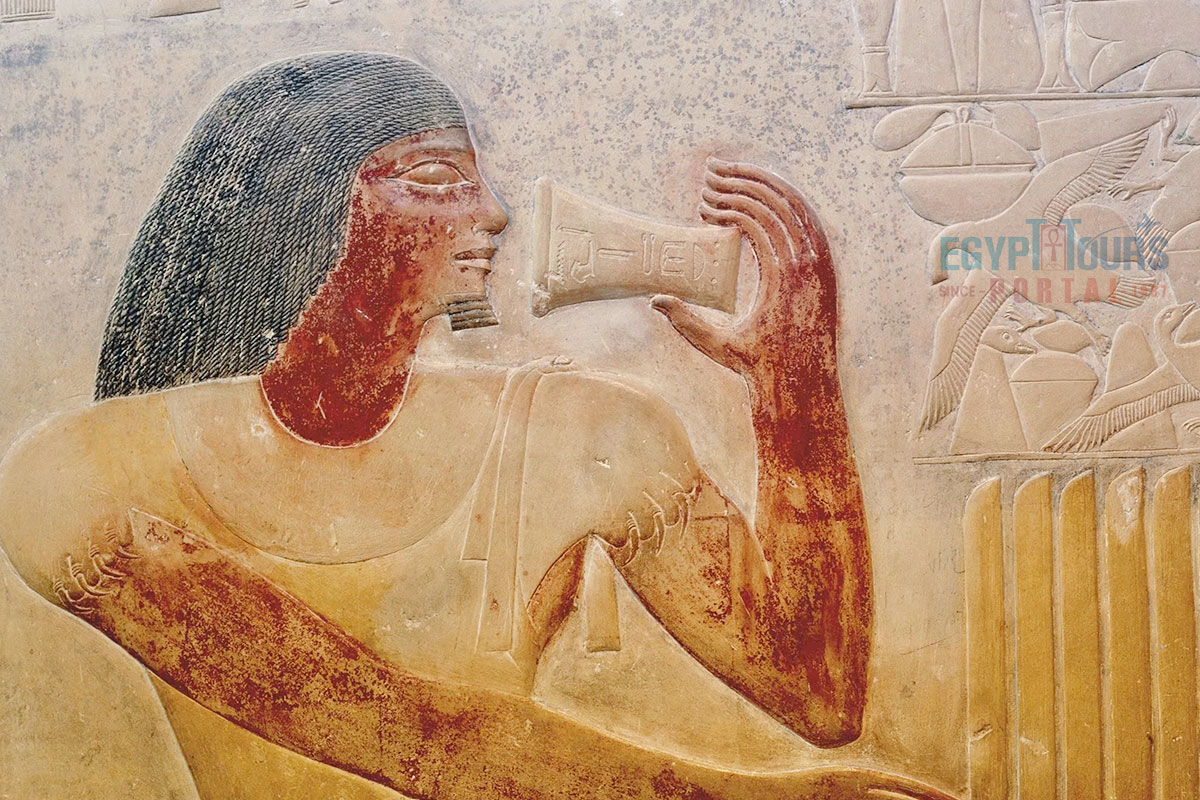
Tekh Festival, a.k.a The Feast of Drunkenness, was dedicated to the goddess Hathor of joy; this lively festival commemorated the myth in which humanity was spared from ultimate destruction from the war goddess Sekhmet by beer. The legend states, Ra grew weary of human cruelty and sent Sekhmet to punish them. She wreaked havoc until the rest of the gods advised Ra to stop the carnage before she killed everyone, and there was no one left alive to learn anything.
Ra then instructed Tenenet, the goddess of beer, to create a vast quantity of red beer and place it in Sekhmet’s path. Mistaking it for blood, she drank it all, fell asleep, and awoke transformed into the benevolent Hathor. The festival originated in the Middle Kingdom (2040-1782 BCE), reached its peak in the early New Kingdom (1570-1069 BCE), waned in popularity, and was revived during Roman Egypt.
At the Temple of Mut at Karnak Temple Complex, participants in the great Hall of Drunkenness would indulge in revelry, sleeping until awakened by drummers, thus facilitating an intimate communion with the goddess Mut, closely associated with Hathor.
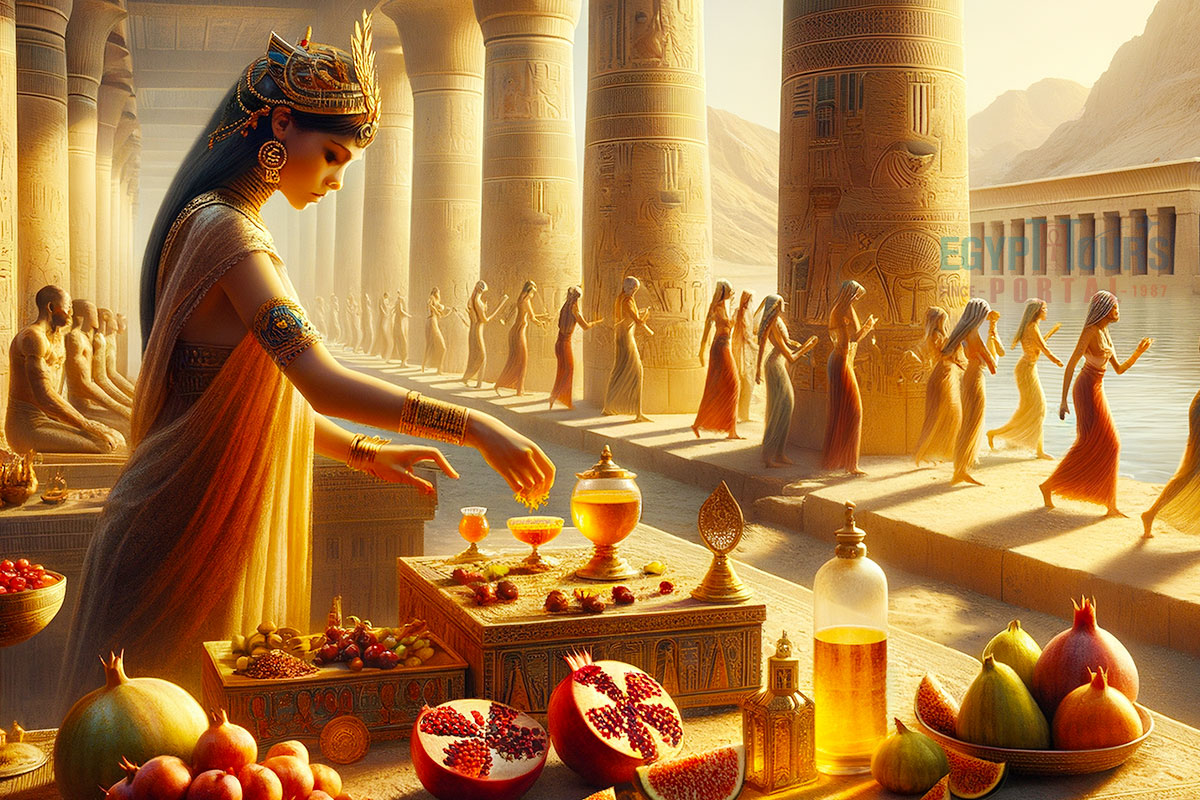
Hathor Festival is an annual celebration at Dendera, the center of Hathor’s worship, that honors the goddess’s birth and the blessings she bestowed. It dates back to the Old Kingdom; this festival was highly anticipated and mirrored the Tekh Festival in various ways.
The Hathor cult enjoyed immense popularity, similar to that of Neith. Festival-goers were motivated to indulge in alcohol while enjoying dancing and singing in tribute to the goddess. While there may have been an intimate aspect to the festivities akin to the Tekh Festival, interpretations of this nature are not widely approved.
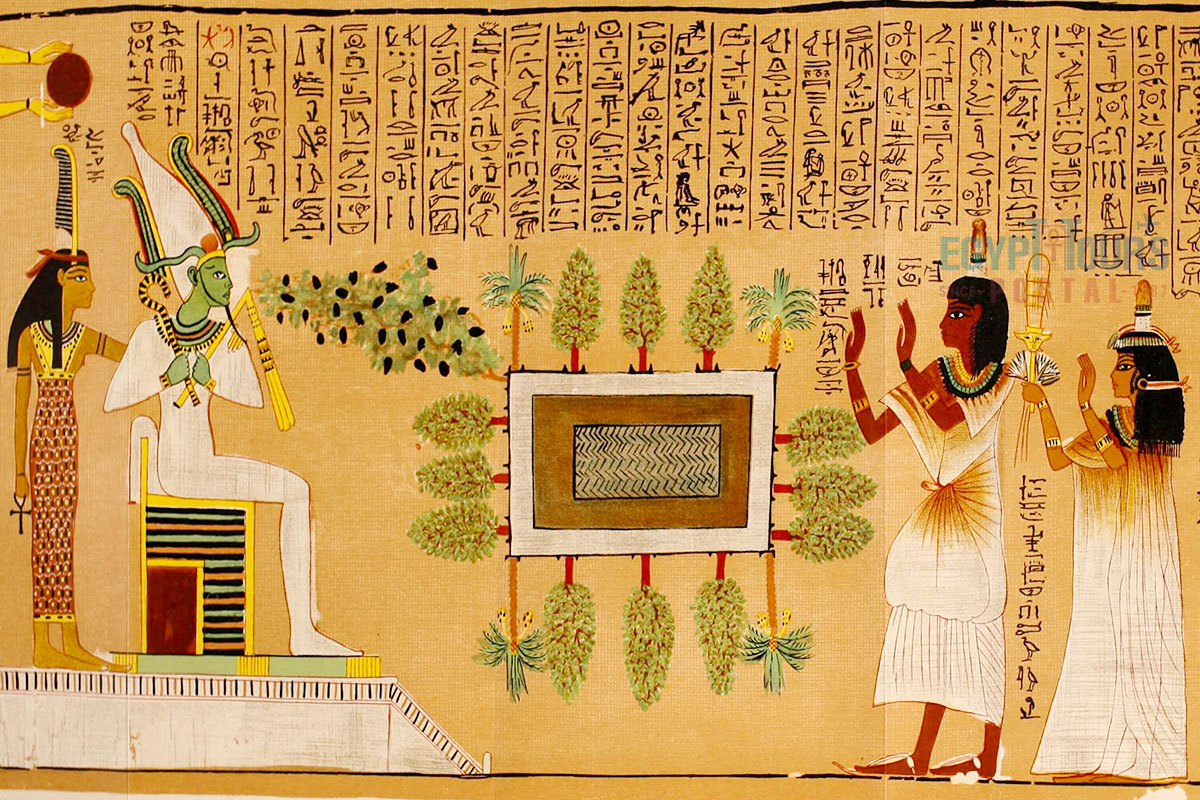
Sokar Festival “Festival of Khoiak” was dedicated to Sokar, an agricultural deity from the Early Dynastic Period (3150 - 2613 BCE), later took on characteristics of Osiris. In the Old Kingdom, the solemn Khoiak Festival merged with the Sokar Festival, which marked Osiris’s death.
It began as a somber event, then evolved to celebrate Osiris’s resurrection and was observed for nearly a month during the Late Period of Ancient Egypt (525-332 BCE). Celebrations included the planting of Osiris crops and Gardens, symbolizing the god’s rebirth from the earth, which is seen as an ancient practice rooted in the early worship practices of Sokar.
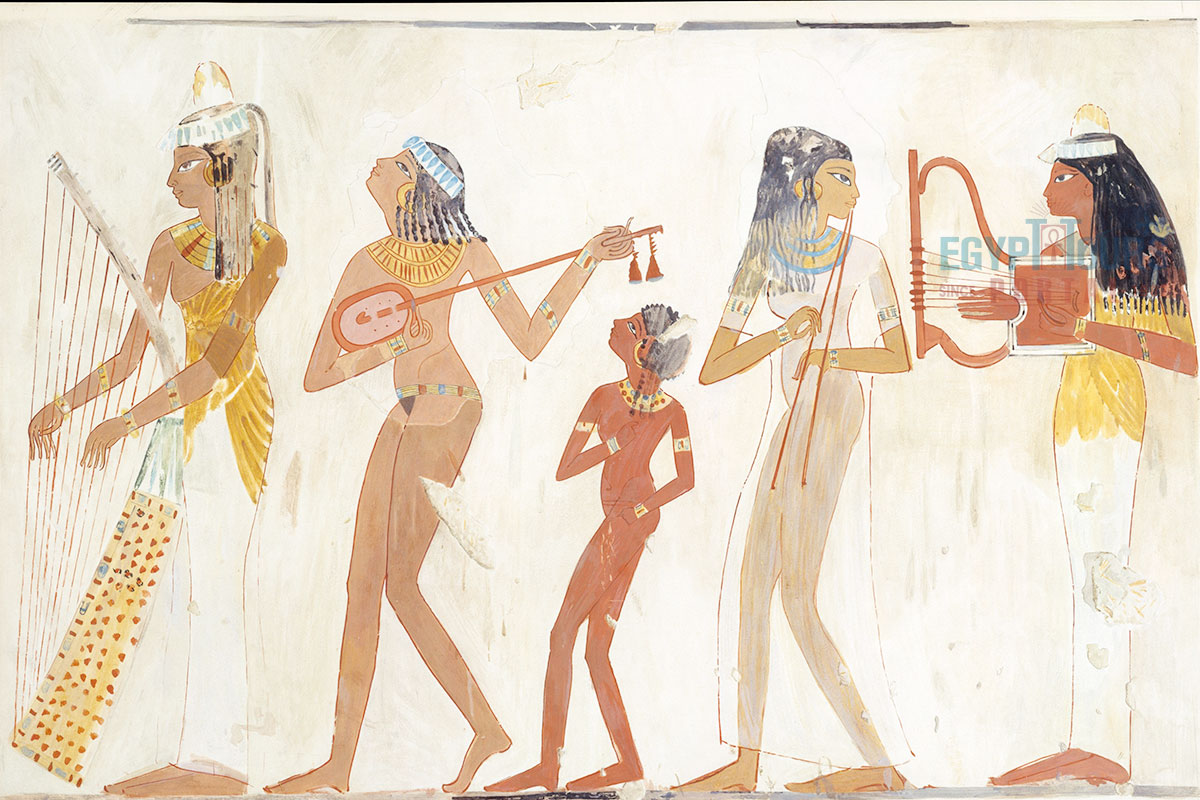
Bast Festival is a vibrant celebration at Bubastis that honors the goddess Bastet, the protector of the hearth, women, and children. It is one of the most popular festivals in Egypt, which marks the birth of the cat goddess. Herodotus noted that Bastet’s festival was particularly elaborate, claiming that during this time, women enjoyed freedom from societal constraints.
Ancient Egyptian Women celebrated by drinking, dancing, and openly expressing their bodies, a practice that underscored the festival’s themes of fertility. Herodotus estimated attendance to be over seven hundred thousand, though this figure may be exaggerated. Bastet’s popularity transcended gender, drawing many to the festivities, which revolved around music, dancing, and gratitude toward the goddess for her blessings.
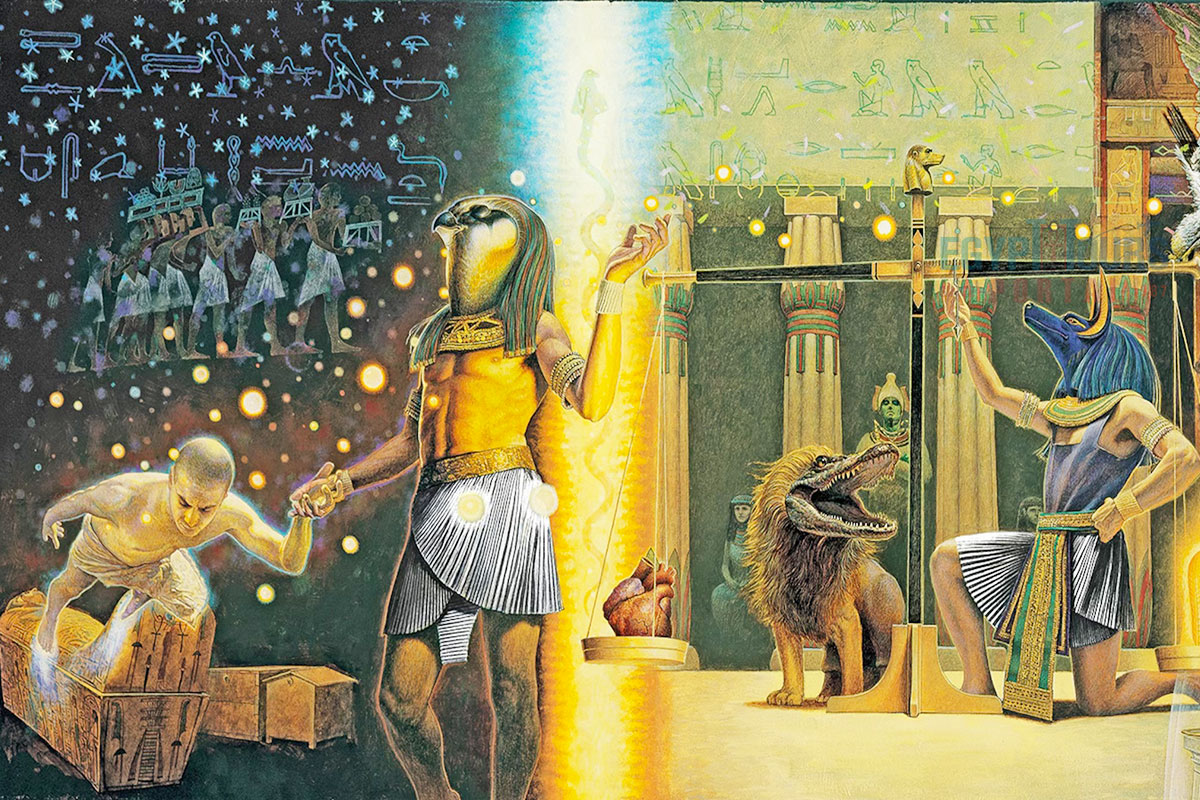
Nehebkau Festival was dedicated to Nehebkau, the deity who connected the ka (soul) to the khat (body) at birth and then to the ba (the soul’s traveling aspect) after death, and was honored during this festival. Celebrating Osiris’s rebirth and the return of his soul,” Ka”, it marked a time of renewal and resurrection for the community. In many ways, the festival paralleled the Wepet-Renpet Festival of the New Year, celebrating life and regeneration.

Min Festival honored the god of fertility and virility, Min, who was revered since the Predynastic Period (6000 - 3150 BCE). He is often depicted as a man holding a flail and standing with erect genitalia. The Min Festival likely originated during the Early Dynastic Period but is most documented during the New Kingdom and afterward.
Similar to the Opet Festival, priests would carry Min’s statue in a parade filled with sacred dancers and singers. At the festival's climax, the king would cut the first grain stack, ceremonially thus symbolizing his bond with the land, the gods, and the public. This act was a prayer for a fruitful reign, ensuring prosperity for both the land and its inhabitants.
The festivals elevated the people toward the divine, bringing the present with the past and paving the way for the future, or simply times where people could relax and enjoy themselves. You have the chance to explore the history of ancient Egyptian by visiting the stunning temples, tombs, Pyramids, and attractions accompanied by an Egyptologist tour guide. Travel with our Egypt tour and enjoy a Nile river cruise experience along the Nile valley to discover what Egypt has to offer.
Private 4 Days Cairo Tour Packages 4 days Cairo Egypt tour package will offer a bles...
Tour Location: Cairo – Giza...
Stunning 5 Days Cairo and Alexandria Tour Package 5 days Cairo and Alexandria tour p...
Tour Location: Cairo/Giza/Alexandria...
Exceptional 6 Days Cairo, Luxor & Aswan Tour Package 6 days Cairo, Luxor & A...
Tour Location: Cairo/Giza/Aswan/Luxor...
Amazing 7 Days Cairo and Hurghada Holiday 7 Days Cairo & Hurghada holiday will e...
Tour Location: Cairo – Giza – Hurgh...
The most important festival in ancient Egypt was the Opet Festival in Thebes (modern-day Luxor). This grand festival was held annually in honor of the gods Amun, his consort Mut, and their son Khonsu, and was meant to renew the pharaoh's divine power and legitimacy to rule.
During the festival, statues of Amun, Mut, and Khonsu were carried in ceremonial barques from the Karnak Temple to the Luxor Temple, accompanied by processions, music, dancing, and feasting. The Opet Festival lasted between 11 to 27 days, depending on the era, and served to reinforce the unity between the gods and the pharaoh, as well as celebrate fertility, regeneration, and prosperity.
Ancient Egyptians celebrated numerous festivals throughout the year, and there are records of over 50 major festivals. These festivals were closely tied to their religious beliefs, agricultural cycles, and the pharaoh’s role as a mediator between the gods and the people. Many of these festivals were communal events with feasts, processions, and offerings, bringing together people from across Egypt in worship and celebration. Some of the most well-known festivals include:
Opet Festival, which celebrates the renewal of the pharaoh's power.
Wepet Renpet represented the New Year festival that marked the beginning of the annual flood and the Egyptian calendar.
Sed Festival celebrated the pharaoh’s reign, usually after 30 years on the throne.
Festival of the Beautiful Reunion celebrated the union of Hathor and Horus at Edfu.
The Festival of the Valley, honoring the dead, where Egyptians visited tombs and made offerings.
Heb-Sed is a rejuvenation festival celebrated after a king has ruled for 30 years.
There is no strong evidence to suggest that ancient Egyptians celebrated individual birthdays in the same way they are celebrated today, but royal birthdays may have been marked by specific rituals or commemorations, particularly for the pharaoh.
More common was the celebration of a person's rebirth into the afterlife, which was considered more significant than the birth into the physical world. The ancient Egyptians focused heavily on death, the journey to the afterlife, and rebirth in religious contexts.
Several gods were associated with festivities, joy, and revelry. One of the most prominent deities linked to the celebration is Hathor, the goddess of love, beauty, music, and dance. Hathor was often worshipped through festivals that involved music, feasting, and dancing, all elements of joyful celebration.
Bes was a dwarf god who was a protector of households, particularly of mothers and children, and was also associated with merriment and protection. He was often invoked during festivals, celebrations, and private gatherings, as he was believed to bring good fortune and joy.
The ancient Egyptians celebrated death, but it was a celebration of the transition to the afterlife rather than death itself. They believed that death was not the end but a step toward eternal life.
The Egyptian view of death was more optimistic, focusing on rebirth, continuity, and eternal life. Funerary rituals were elaborate and often included festivities to ensure the deceased's safe passage to the afterlife.
The rituals like mummification, prayers, hymns, and offerings to deities, and the Opening of the Mouth ceremony were designed to honor the dead and provide them with offerings, and the Opening of the Mouth ceremony ensured they had everything they needed for the afterlife.
The entire country of Egypt deserve to be explored with its every heavenly detail but there are places that must be seen before any other such as the breathtaking Hurghada's red sea, The wonders of Cairo the pyramids of Giza, the great sphinx, the Egyptian Museum, Khan El Khalili Bazaar, the wonders of Luxor like Valley of the Kings, Karnak & Hatshepsut temple and the wonders of Aswan such as Abu Simbel temples, Philea temple, Unfinished obelisk and The Wonders of Alexandria like Qaitbat Citadel, Pompey's Pillar and Alexandria Library. Read more about the best places to visit in Egypt.
If you want to apply for a Visa On Arrival that lasts for 30 days then you should be one of the eligible countries, have a valid passport with at least 6 months remaining and pay 25$ USD in cash, as for the E-Visa for 30 day you should have a valid passport for at least 8 months, complete the online application, pay the e-visa fee then print the e-visa to later be presented to the airport border guard. You could also be one of the lucky ones who can obtain a free visa for 90 days. Read more about Egypt travel visa.
Egypt has a variety of delicious cuisines but we recommend “Ful & Ta’meya (Fava Beans and Falafel)”, Mulukhiya, “Koshary”, a traditional Egyptian pasta dish, and Kebab & Kofta, the Egyptian traditional meat dish.
The best time to travel to Egypt is during the winter from September to April as the climate becomes a little tropical accompanied by a magical atmosphere of warm weather with a winter breeze. You will be notified in the week of your trip if the Climate is unsafe and if any changes have been made.
You should pack everything you could ever need in a small bag so you could move easily between your destinations.
We have been creating the finest vacations for more than 20 years around the most majestic destinations in Egypt. Our staff consists of the best operators, guides and drivers who dedicate all of their time & effort to make you have the perfect vacation. All of our tours are customized by Travel, Financial & Time consultants to fit your every possible need during your vacation. It doesn't go without saying that your safety and comfort are our main priority and all of our resources will be directed to provide the finest atmosphere until you return home.
You will feel safe in Egypt as the current atmosphere of the country is quite peaceful after the government took powerful measures like restructuring the entire tourist police to include all the important and tourist attractions in Egypt. Read more about is it safe to travel to Egypt.
Wear whatever feels right and comfortable. It is advised to wear something light and comfortable footwear like a closed-toe shoe to sustain the terrain of Egypt. Put on sun block during your time in Egypt in the summer to protect yourself from the sun.
The best activity is by far boarding a Nile Cruise between Luxor and Aswan or Vise Versa. Witness the beauty of Egypt from a hot balloon or a plane and try all the delicious Egyptian cuisines and drinks plus shopping in old Cairo. Explore the allure and wonders of the red sea in the magical city resorts of Egypt like Hurghada and many more by diving and snorkeling in the marine life or Hurghada. Behold the mesmerizing western desert by a safari trip under the heavenly Egyptian skies.
There are a lot of public holidays in Egypt too many to count either religious or nation, the most important festivals are the holy month of Ramadan which ends with Eid Al Fitr, Christmas and new years eve. Read more about festivals & publich holidays in Egypt.
Egypt is considered to be one of the most liberal Islamic countries but it has become a little bit conservative in the last couple of decades so it is advised to avoid showing your chest, shoulders or legs below the knees.
Arabic is the official language and Most Egyptians, who live in the cities, speak or understand English or at least some English words or phrases. Fewer Egyptians can speak French, Italian, Spanish, and German. Professional tour guides, who work in the tourism sector, are equipped to handle visitors who cannot speak Arabic and they will speak enough English and other languages to fulfill the needs of all our clients.
The fastest way is a car, of course, a taxi. If you are in Cairo ride a white taxi to move faster or you could board the fastest way of transportation in Egypt metro if the roads are in rush hour.
The temperature in Egypt ranges from 37c to 14 c. Summer in Egypt is somehow hot but sometimes it becomes cold at night and winter is cool and mild. The average of low temperatures vary from 9.5 °C in the wintertime to 23 °C in the summertime and the average high temperatures vary from 17 °C in the wintertime to 32 °C in the summertime. The temperature is moderate all along the coasts.
It is the home of everything a traveler might be looking for from amazing historical sites dating to more than 4000 years to enchanting city resorts & beaches. You will live the vacation you deserve as Egypt has everything you could possibly imagine.









